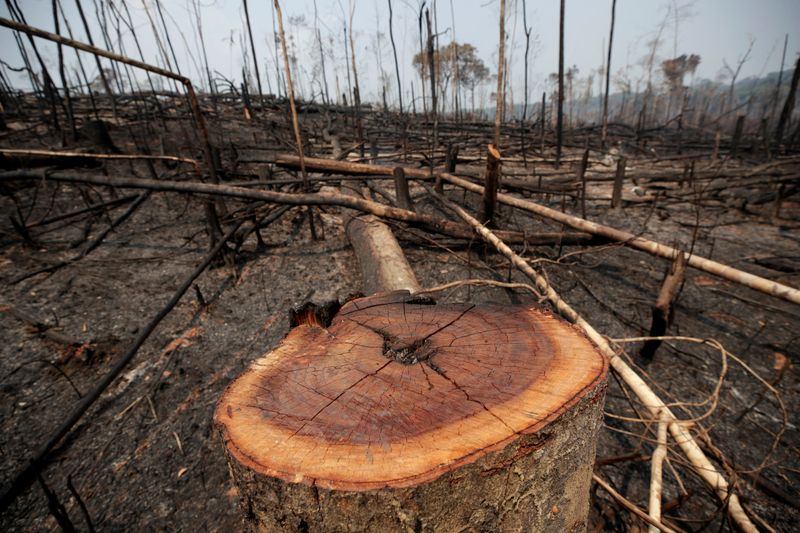It almost impossible to protect least part nature
2022.12.14 03:32
[ad_1]

It almost impossible to protect least part nature
Budrigannews.com – From the luxuriant Amazon U.N. experts assert that a third of all land and sea territories must be set aside to save the world’s landscapes and all of their wildlife from the rainforest to the icy Arctic Ocean.
The global agreement being hammered out this month at the U.N. biodiversity summit in Montreal is centered on the call. Whenever supported toward the finish of the highest point one week from now, states would consent to save 30% of their property and ocean regions for protection by 2030 – multiplying how much land region and dramatically multiplying the sea domain at present under preservation.
In excess of 110 nations have shown up to openly endorse the 30-by-30 objective, including Canada, the US and France.
The argument made in favor of the goal is that it is necessary to reverse the destruction of nature. Over a million species are currently in danger of disappearing, while the global insect population is declining at a rate of up to 2% annually and 40% of the remaining plant species are in danger.
However, as is frequently the case with science-based policy, the specifics determine whether or not a global conservation goal of 30 percent can truly save the world’s endangered species and locations.
Stuart Pimm, a Duke University biologist, stated, “The danger, as with all these kinds of events populated by politicians, is that they want a simple number.” They would like to be able to declare when they leave Montreal that we will safeguard 30% of the planet. However, that alone is insufficient.”
Quantity versus quality ultimately determines this guiding question.
Experts stated that 30% as the threshold for preventing species loss does not support a strong scientific argument. In fact, depending on which areas are chosen, it could require a much higher or lower percentage of land or sea.
Pimm stated, “30% is neither necessary nor sufficient.” We can smartly protect the most important areas of biodiversity if we act in the right way.”
He stated that there is a temptation to conserve vast stretches of land, such as the Arctic tundra or Saharan desert, that are already devoid of people but also have relatively little biodiversity.
But it’s important to protect biodiversity hot spots—areas with a lot of different species—even though it’s harder to save them because people live there or extractive industries are there.
Protecting small swaths of land or the ocean, like the Great Barrier Reef in Australia or the Andes, can yield far greater rewards than, say, protecting large expanses of prairie.
More US spacecraft in South Korea may not like North Korea
Pimm stated, “A numerical target will not work.” It would have little effect on biodiversity if we only protected 50% of the planet and the 50% of it with the fewest people.
According to a study published in Science in June 2022, it would take at least 44% of the world’s land area to safeguard areas with a high diversity of species, preserve intact ecosystems, and maximize the representation of various landscapes and species. But these areas are home to more than 1.8 billion people.
In any case, co-creator Hugh Possingham, a scientist at the College of Queensland, noticed that “while there isn’t anything supernatural around 30% … targets assist with concentrating of countries.”
He stated, “I see 30% as a goal that the majority of countries can reasonably achieve by 2030,” adding that some nations, like Bhutan, had already achieved this target.
In the 30-by-30 debate at COP15, one of the most contentious issues is whether the goal should be met at the national or global level.
Scientists and negotiators stated that it is a significant distinction. Some countries are small and don’t have a lot of land for the natural world. Other nations, such as those with tropical forests like Brazil and Indonesia, are vast and still contain a high level of biodiversity. Even if these nations were to preserve only 30 percent of their territory, the natural world could actually suffer significantly.
Possingham stated, “Some ecosystems are more diverse and fragile.” To preserve biodiversity and maintain ecosystem functions that stabilize the planet’s climate, places like the Amazon require much more than 30%.”
More Humanitarian crises will prevail due to climate change
A national pledge to conserve 30% of the Amazon would be a significant reduction given that less than half of it is currently under official protection or indigenous stewardship.
The issue of what constitutes protection is the other contention that plagues 30-by-30. Some nations might encourage indigenous stewardship of protected areas or allow people to live there. Some may even permit the operation of extractive industries subject to permits and regulations. In other instances, conservation areas are closed to the public.
For 20% of protected areas, the European Union has proposed allowing logging, mining, and fishing under conservation management, while 10% would be protected more strictly.
Greenpeace, an environmental group, accused the EU last week of attempting to soften 30-by-30 language, which the EU denied.
Ladislav Miko, a special biodiversity envoy for the European Commission from the Czech Republic, stated at a news conference last week, “Whatever activity is eventually happening in those areas, it should not harm biodiversity and the functioning of the ecosystem.”








